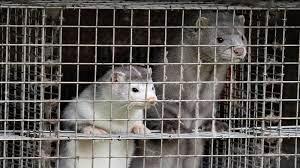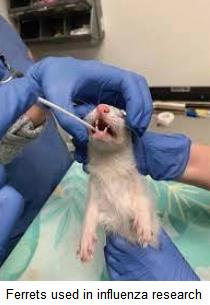 Health authorities in the province of A Coruna in Spain recently identified an outbreak of avian influenza, strain H5N1 in mink. The diagnosis was confirmed by the Nation’s WHO Reference Laboratory.
Health authorities in the province of A Coruna in Spain recently identified an outbreak of avian influenza, strain H5N1 in mink. The diagnosis was confirmed by the Nation’s WHO Reference Laboratory.
Mink demonstrated respiratory signs and elevated mortality on the farm holding approximately 51,000 animals. The Ministry of Rural Affairs euthanized all animals and initiated surveillance over poultry and mink farms in a designated zone.
 The appearance of HPAI virus in mink is not unexpected, given that a close relative, ferrets, are used as an experimental laboratory animal for influenza infections.
The appearance of HPAI virus in mink is not unexpected, given that a close relative, ferrets, are used as an experimental laboratory animal for influenza infections.
It is presumed that the mink were infected by feeding raw-ground chicken from an infected flock, as is the practice in the U.S. The significance of the case relates to the fact that mink are obviously potential “mixing vessels” for an avian virus with mammalian-strains. Co-infection could allow interchange of genetic material that could possibly result in a zoonotic or even a pandemic strain.
EGG-NEWS has consistently warned that confinement of mink in large numbers in close proximity represents a risk of multiplication and dissemination of a pathogen if introduced to the herd. Feeding mink raw ground spent hens and animal offal represents an unjustified danger of trans-species transmission and adaptation of viruses. With H5N1 cases reported from turkeys, backyard flocks and wild birds in Utah, California and Wisconsin, it is only a matter of time before the infection emerges in U.S. mink farms. The H5N1 AI virus has been documented as infecting a seal, sea lion, bear, fox and other mammals